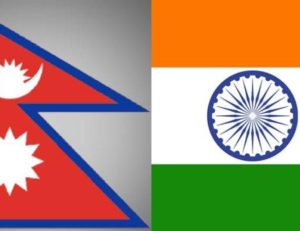India-Nepal petroleum products pipeline inaugurated
Prime Minister Narendra Modi and his Nepal counterpart KP Sharma Oli jointly inaugurated South Asia’s first cross-border petroleum products pipeline from Motihari (in Bihar) in India to Amlekhgunj in Nepal through video conference. Both leaders also expressed confidence that bilateral relations between India and Nepal will continue to further deepen and expand across diverse sectors. Also regular exchanges at highest political levels have laid down a forward-looking agenda for expanding India-Nepal partnership.
This important connectivity project have been early implemented and completed much ahead of schedule as the deadline was 30 months but it was readied in just 15 months.
About Motihari-Amlekhgunj pipeline
It is a first-ever cross-border petroleum products pipeline in the South Asia region.
Usage:
The Motihari-Amlekhgunj petroleum products pipeline is a 69-kilometre pipeline with a capacity of 2 million metric ton (MMT) per annum. It will provide cleaner petroleum products at an affordable cost to people of Nepal. It is envisaged to put in place a mechanism for assured, continuous, cost effective, quality and eco-friendly supply of petroleum products to Nepal.
In the first phase, the pipeline will be used to supply diesel from India. Nepalese government has made necessary arrangement for Nepal Army to provide security to pipeline on their side of border.
Builder: India’s largest refiner the Indian Oil Corporation Ltd (IOCL) built the pipeline, with an investment of more than Rs.324 crore, in collaboration with Nepal Oil Corporation Ltd (NOCL). It has been built in fulfilment of commitment made under an Memorandum of Understanding (MoU) signed in August 2014. The India-Nepal are also working to build additional storage facility at Amlekhgunj Depot (in Nepal) which will supplemet the storage of petroleum products in Nepal towards which NOCL has committed estimated cost of Rs.75 crore.
Significance: The pipeline reiterates India’s commitment to support development of Nepal according to priorities of neighbouring country. It is one of the best examples of connectivity in terms of trade and transit and infrastructure.
Also NOCL is expected to save Rs.2 billion annually in freight of petroleum products and save millions of rupees extra by reducing leakage of petroleum products.
Background
The Motihari-Amlekhgunj oil pipeline project was 1st proposed in 1996. However, the project finally edged closer to reality during PM Modi’s visit to Kathmandu in 2014.
Then in August 2015, governments of India-Nepal inked an agreement to execute the project but following the 2015 earthquake in Nepal the project construction was delayed and supply obstruction along the southern border following Madhesi agitation. In April 2018, the project construction works finally began.
At present, the products are being transported from India to Nepal by tankers/trucks at 13 pick-up points (7 products and 6 LPG).
Month: Current Affairs - September, 2019


